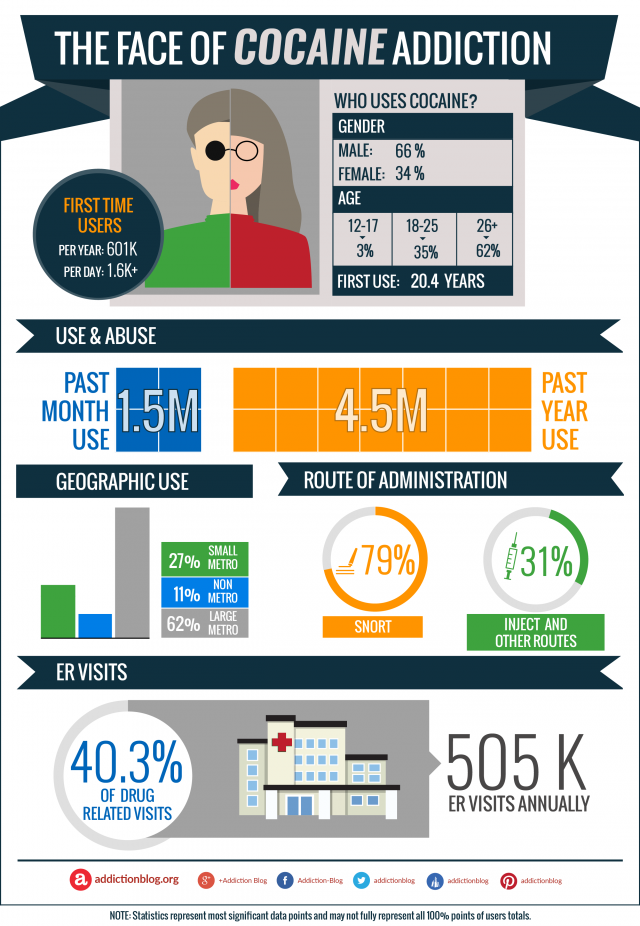Cocaine use in the U.S. statistics?
The United States are the world’s largest consumer of cocaine. In fact, this drug is the second most popular illicit drug abused recreationally by Americans; the first is cannabis.
According to the NSDUH (National Survey on Drug Use and Health) in 2014, there were an estimated 1.5 million people aged 12+ who reported past-month cocaine use. About 1.4% of young adults within the age bracket of 18 to 25 reported past-month cocaine use, which is a higher percentage than any other age group.

Cocaine use demographics
Gender: From past year reports for cocaine use, 66% of users were male and 34% were female. Ever since 1985, the rates of cocaine use for men have been about twice as high as the rates for women cocaine users. However, rates of use for both genders have consistently declined.
Age: Average age at first use was 20.4 years. The age of users who reported past year use is:
- 3% – 12-17 years old
- 35% – 18-25 years old
- 62% – 26+ years old
Employment Status: Of people who reported cocaine use during the previous year, 71.4% were employed. This data shows an estimated 0.9 million adult employed cocaine users. However, the rate of use is higher for the unemployed. NIDA’s most recent survey indicates that 11.8% of unemployed persons used cocaine in the past year, compared to 3.2% of the employed.
What cocaine dangers do users face?
Overdosing on cocaine is a serious danger that all cocaine users face, whether it’s intentional or unintentional. A cocaine overdose occurs when a drug user takes too much cocaine and has a toxic reaction that results in risky, hazardous symptoms, and sometimes even death.
Number of annual visits to the emergency room that involve cocaine is an estimated 505.000 (40.3% of total ER visits). These statistics make cocaine the No.1 most mentioned drug in ER settings, with 162 visits per 100.000 people.
Cocaine addiction and treatment questions
You can contact your primary care physician or family doctor, a school counselor, your psychologist, or licensed psychiatrist for referral. For help with a cocaine problem, you have several resources at your disposal to start from:
- Call SAMHSA’s National Helpline on 1-800-662-HELP (4357) OR 1-800-487-4889 (TDD)
- Find a Treatment Facility Near You using SAMHSA’S Treatment Locator
- Join a support group such as 12 step programs, SMART Recovery, Life Ring, Cocaine Anonymous, etc.
If you have any additional questions, feel free to post them in the comments section at the bottom of the page. We try to answer all legitimate inquiries personally and promptly, or we will refer you to professionals who can help.








Related Posts